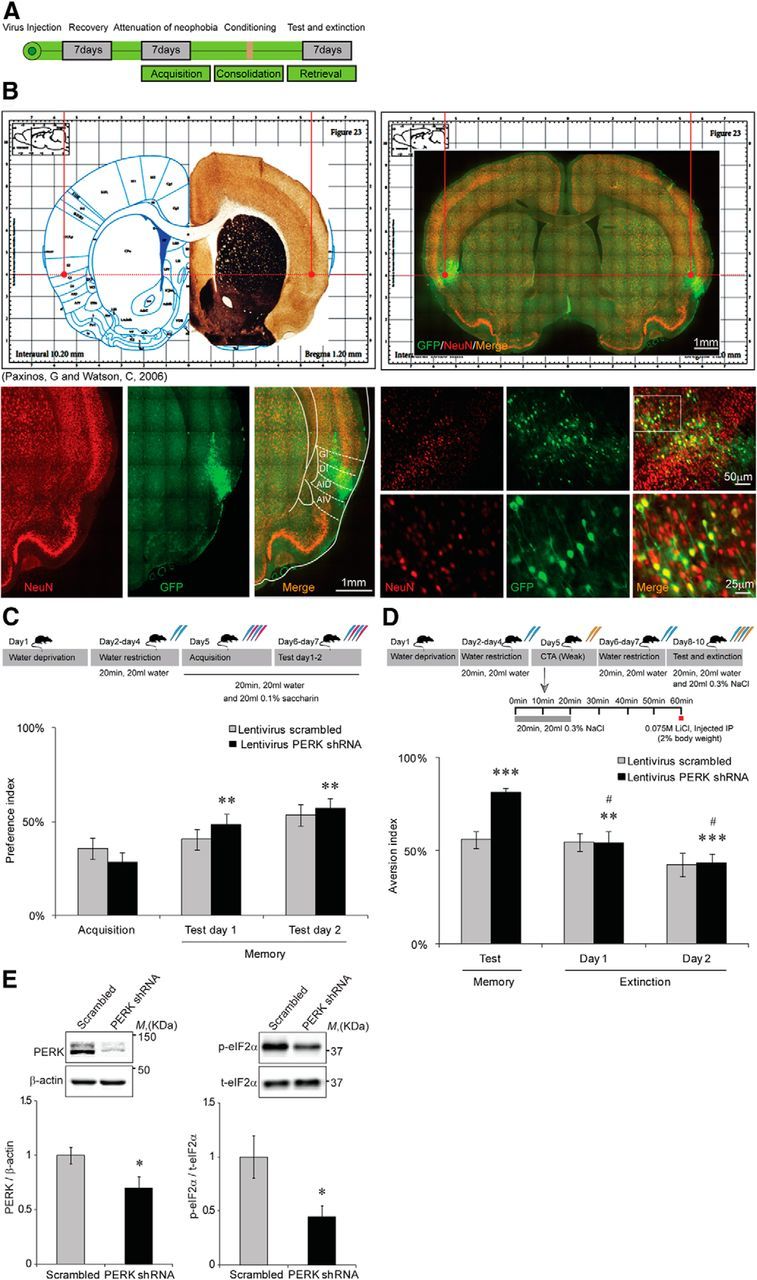Figure 3.

Knockdown of PERK in the IC enhances behavioral plasticity. A, Schematic description of the experimental procedure. B, A representative slice with neuronal nuclear staining (NeuN) colocalized with native GFP, indicating the virus injection site and proper expression. C, Novel taste (0.1% saccharin) learning is enhanced in PERK shRNA lentivirus-injected rats as expressed by the increase in preference index (PERK shRNA lentivirus, n = 21; scrambled sequence control vector controls, n = 21,**p = 0.005 for test day 1, and p = 0.001 for test day 2). D, CTA memory is enhanced in PERK shRNA lentivirus-injected rats (n = 21) compared with scrambled sequence shRNA lentivirus-injected controls (n = 21). Extinction of CTA is improved in PERK shRNA lentivirus-injected rats, as demonstrated by the reduction in aversion index. Memory day, ***p = 0.0003; extinction of CTA, **#p = 0.001 for day 1 extinction and 0.0001 for day 2 extinction. Data are mean ± SEM. Top diagrams are schematic description of the behavioral procedure. Blue pipettes indicate water. Red pipettes indicate saccharin. Yellow pipettes indicate 0.3% NaCl. E, Immunoblot analysis of the changes in PERK and p-eIF2α levels following virus injection to the IC demonstrates significant reduction in PERK levels (left, n = 12, *p = 0.02), and significant reduction in p-eIF2α levels (right, n = 17, *p = 0.01).
